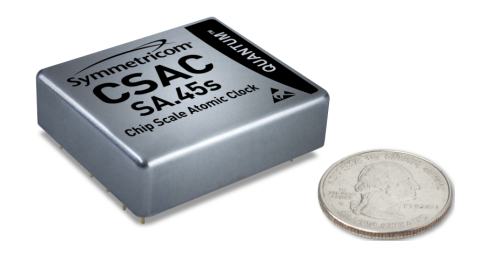chip scale atomic clock (NIST) (CSAC)
A Chip Scale Atomic Clock (CSAC) is an atomic frequency standard whose package size corresponds to the chip area. The CSAC design is characterized by its extreme compactness. It is a special design of a rubidium standard which has only one tenth to one thirtieth of the volume compared to conventional rubidium standards and a power consumption of only 100 mW to 150 mW.
The frequency accuracy and stability of CSAC standards is a power of ten higher than that of temperature-controlled oscillators, the OCXOs and TCXOs. Thus, the frequency stability is `10^-11`, which is comparable to that of conventional rubidium standards. The frequency deviation is thus one second in 300 years.
The CSAC clock is a special version of a rubidium standard and is based on the transition between two hyperfine levels of the rubidium-87 atom. The functional package of the SCAC atomic frequency standard consists of a microsystem-engineered resonant cell containing the rubidium-87, which is irradiated by the laser beam of a VCSEL laser.
SCAC atomic clocks can be used in many military and civilian applications, in GPS systems, radio telescopes, as high-accuracy timers in rail, air and marine transportation, as well as in telecommunications and cellular networks, for time signals, and in many other applications.

